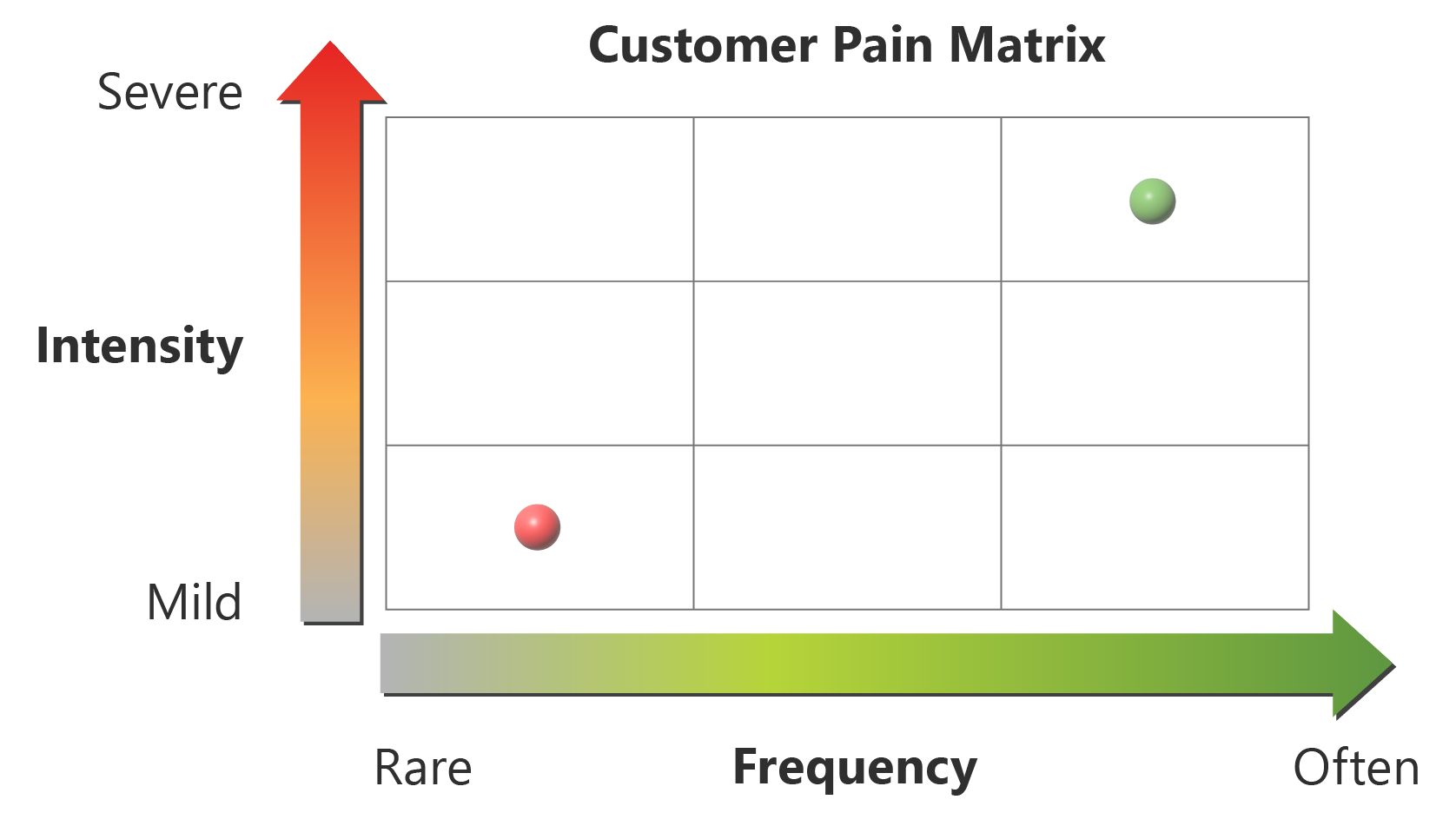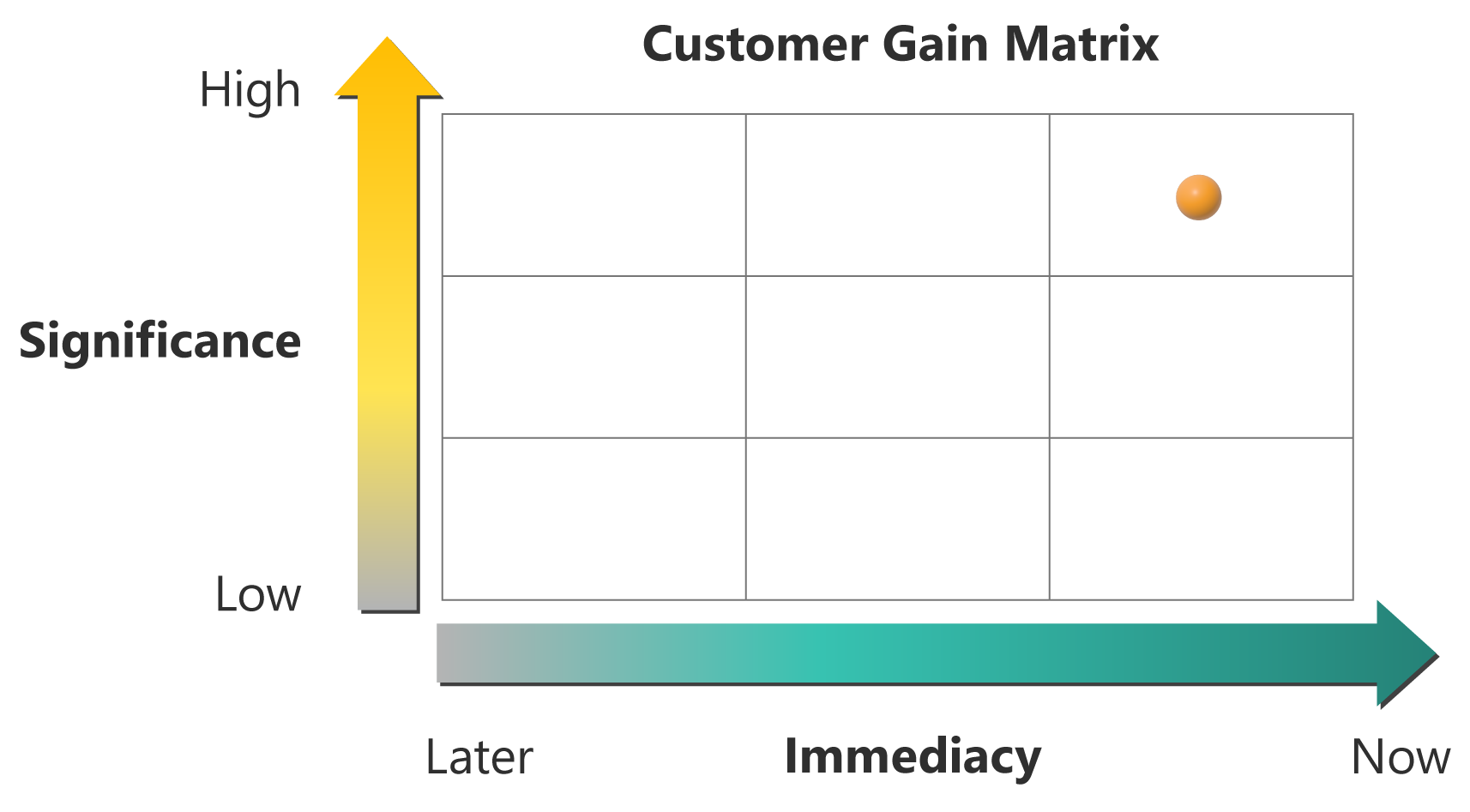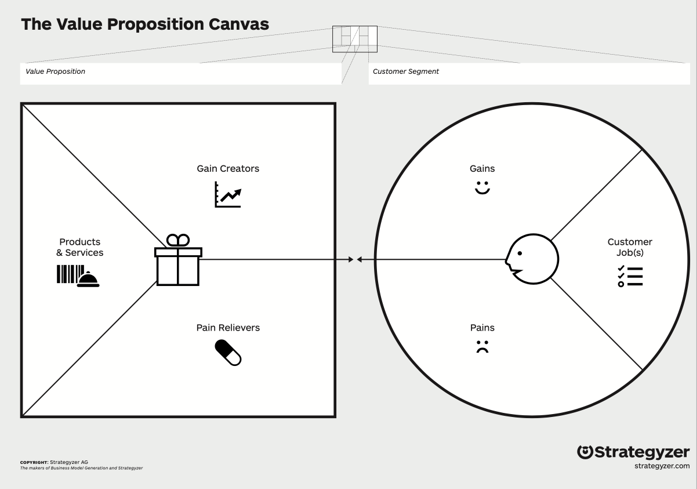Articulate your idea
Every startup has a value proposition at its core. A statement that describes what your product does for your users and what benefits they derive from using it.
When your startup is just an idea, the value proposition is basically a set of untested hypotheses. That is, you think you know which customers you serve, what job your product does for them, and how your product is valuable to them.
In this unit, we use the Value Proposition Canvas. It's a simple one-page tool to capture and test each of these hypotheses and then use feedback from customers to refine it. This exercise is important. If you guess wrong and build a product that doesn't do the job your customers need or doesn't create enough value for them, they won't use it and you won't have a business.
A value proposition has three elements:
- What useful jobs does your product do for customers?
- What pain are you solving for them?
- What gain are you creating for them?
Let's look at each of these elements in detail.
Jobs to be done
Any product can be viewed as a thing that gets a specific job done for customers.
It's tempting to think of a product in terms of features, but it can be more useful to look at the jobs that it's going to do. Customers are more interested in what outcome your product can achieve for them than what the product itself is.
The late Professor Clayton Christensen from Harvard University pioneered this concept by studying a wide range of products and asking, "What valuable job is this doing for the customer?"
A classic example: If you buy a drill, the job you're interested in getting done is creating holes, which in turn might be because you want to mount a bookshelf on your wall. The job to be done by the drill is to create holes that enable you to mount your bookshelf. As a customer, you're more interested in the outcome than the tool by which you achieve it.
The same concept can be applied to startups. If you think about your product from the customer's perspective, you can ask, "What job is it going to do for my customer?"
Try the following story format as a way of expressing the job to be done from a customer's viewpoint:
- When <description of the situation or context>
- I want to <description of the job to be done>
- So that <description of the outcome>
Let's look at a simple example:
When I'm working on a new startup idea, I want to find out quickly whether it's worth pursuing so that I spend my time on something that has a good chance of succeeding.
Task: Create a job story
Create a job story for your product by using the preceding format, imagining that you're the customer. Remember that these hypotheses are about why your customers want your product to do a certain job, and what that job is. You can test and validate these hypotheses only by talking to customers.
Pain relievers and gain creators
For any product, it's possible to identify a pain that it relieves for customers, a gain that it creates for them, or in some cases, both outcomes.
Let's look first at pain relievers. These products reduce or eliminate a pain that your customer experiences when they're trying to get a particular job done. Examples of pains include:
- Cost
- Risk
- Wasted time
- Distraction
Pains can also be personal to the individual user, such as frustration, fear, anxiety, or loneliness.
It can be enlightening to talk to customers and understand what pains they want your product to take away so that you can build the right product. Your objective in talking to customers shouldn't be to sell them on your idea, but rather to ask many open questions and understand as many of their pain points as you can.
Your next job is to prioritize those pain points so that you can address the most significant ones with your product. Customers are much more likely to use and pay for a product that relieves a severe, frequent pain over a product that relieves a mild, infrequent pain.
It's helpful to use a customer pain matrix that plots intensity versus frequency, as shown in the following chart. You should focus your attention on the pains in the upper-right quadrant.

Now let's look at gain creators. These products deliver something more to your customers by successfully doing a particular job. Examples of gains include:
- Additional revenues.
- Improved efficiency.
- New skills or capabilities.
Gains can also be personal to the individual user, such as relaxation, enjoyment, or self-actualization.
Similar to painkillers, you can use feedback from customers to plot gains on a customer gain matrix by using significance and immediacy as the two axes.

If you deliver a significant gain to customers that occurs quickly after they use your product, they're more likely to want to use it than if you deliver only a minor gain that takes a while for them to achieve. Focus your attention on the gains in the upper-right quadrant.
Task: Identify pains and gains
Create a customer pains matrix and a customer gains matrix for your target customers. Talk to some customers and populate the matrices with the pains and gains they tell you about. Which pains or gains do you think you should try to address?
Completing this quick task helps you get a feel for whether customers view your product as more of a pain reliever or a gain creator. This information is useful when you start writing copy for your website or for other places where you describe your product and its value proposition.
Case study: Tylenol
To help us delve deeper into pains and gains, let's use Tylenol as a brief case study. Tylenol is literally a pain reliever. The job that it does for customers is taking away a physical pain. At its most basic, the value proposition for Tylenol is pain relief.
If you ask customers why they want the pain taken away, they often tell you that pain stops them from being productive in their day. Or, it makes it harder for them to be fully present with friends and family. Therefore, we could argue that Tylenol's real job is giving people back their day.
In the context of your own startup, make sure you're asking customers not just what functionality they want from your product, but also what outcome they want. Ask why they want the outcome, and how important the functionality is to them.
The Value Proposition Canvas
The Value Proposition Canvas is a useful tool developed by Strategyzer. It's freely available for anyone who wants to visualize, design, and test business models.
The purpose of the Value Proposition Canvas is to help you understand the needs of your target customers with reference to jobs to be done, pains, and gains. It then helps you design your value proposition to accurately meet those needs.

To use the canvas, start by describing the customer segment that you're focusing on in the upper-right box. Then move down and populate each of the three segments with responses from customers. Record their comments about what jobs they need to get done, what pains they want relieved, and what gains they want to achieve.
After you interview your customers, you might start to see some trends in the jobs to be done, pains, and gains they describe, and in how important they perceive each of these elements to be. These trends should give you insights that help you focus on the most important outcomes as you begin designing your value proposition.
Now move to the left side of the canvas and design your value proposition. Populate each of the three segments by describing the product that you believe gets the customers' key jobs done. Describe how it relieves their most important pains, and how it achieves their most important gains.
Task: Complete your own Value Proposition Canvas
Let's put the Value Proposition Canvas into practice. Download the Value Proposition Canvas from Strategyzer.com.
Many people find it useful to print the canvas and use sticky notes to capture key points from customer conversations. Do whatever works best for you.
Now talk to customers or to people who represent the customer segment that you believe you should target. Find out what jobs they need your product to do, the pains they want it to relieve, and the gains they want it to create.
Important
This isn't an introspection exercise. You can hypothesize about jobs, pains, and gains, but the only way you'll find out what customers really want is by talking to them individually.
If you have multiple customer segments, create a Value Proposition Canvas for each segment.